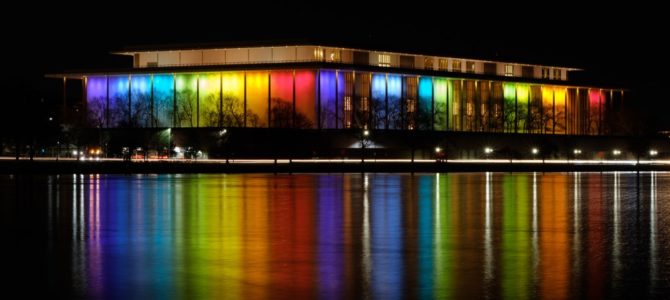
America’s press has finally recognized the return of a pestilence that will plague the nation’s capital. No, not the cicadas, something far worse: Washington society elites.
The New York Times recently used a lengthy article in its Sunday Style section to document the return of high society in and around the Washington metro region, following a lengthy break caused by COVID concerns. (What anything in Washington has to do with style and fashion is a subject for its own debate, but never mind such quibbles.)
The article reveals the worst excess of the capital’s culture, such as it is—a culture focused largely on the city’s own exaggerated sense of self-importance.
Unpaid Advertisement for the Trump Campaign?
The scenes depicted in the Times article practically become self-satire, in which people attempt to bask in the glow of power and fashion:
- An event along the Potomac raising funds for the Washington Ballet: “Underneath [a tent], young men clamored to have their picture taken with [former Speaker of the House] Paul Ryan. White House aides worked a tuxedoed crowd. Ballerinas twirled before a Supreme Court justice and a glut of foreign dignitaries.”
- The return of the “power lunch” at fashionable establishments: “After inboxes across town were hit with an e-mail blast from the D.C. impresario Tammy Haddad touting the reopening of lunch at Café Milano, bureaucrats and media folk flocked to the gaudy Georgetown restaurant where one goes to be seen.”
- Another series of parties, hosted by lobbyist and consultant Juleanna Glover: “Among Russian olive bushes and Italianate columns, elites who gnawed on Wagyu beef and lobster salad there, at various times [in June] included Suzanne Clark, the leader of the U.S. Chamber of Commerce; Kewsong Lee, the chief executive of the Carlyle Group; Rep. Debbie Dingell (D-MI); and Norah O’Donnell, the CBS News anchor.”
- Yet another party, held “at the stately Kalorama home of Justin B. Smith, the chief executive of the Bloomberg Media Group,” which constituted “the first good D.C. media party of the summer.” Actress Uma Thurman, currently dating Smith, also made an appearance among “the journalists who gathered for sea scallops and lamb toast.”
- Discussion about President Joe Biden’s appearances out and about in the capital, contra his predecessor, Donald Trump, who never visited a venue other than his own hotel. The Times dutifully reports that Biden “and Vice President Kamala Harris recently stopped for a surprise lunch at Le Diplomate, this town’s answer to Balthazar, minus the Page Six”
The article goes on in this manner, recounting the ways the well-heeled in Washington pass most of their lives rubbing arms with each other, blissfully unaware of the problems—or perhaps even the existence—of the hoi polloi. One could scarcely imagine a more effective political advertisement for Trump, or any populist outsider attempting to appeal to the forgotten man, than the scenes the Times depicts in words and pictures.
These scenes of self-indulgent revelry do bring one under-appreciated upside for conservatives: Every hour Washington elites spend partying amongst themselves constitutes one hour they are not trying to spend more of other people’s money or run every detail of Americans’ lives from the shores of the Potomac.
Lest one consider this too cynical or jaded, take comfort. Having lived in Washington for more years than I care to remember, I can attest that it boasts charming neighborhoods, beautiful parklands, impressive architecture, and educational cultural landmarks.
Washington’s only problem: All the pretentious people hungry on their own power who inhabit it. It’s enough to turn one into Holden Caulfield, for all the “phonies” lurking around seemingly every corner of the capital.
Retreat to the Hinterlands
President George W. Bush had the perfect antidote to Washington’s self-importance. Every summer, he would decamp to Crawford, Texas—2000 population: 705—to spend time on his ranch, where he enjoyed clearing brush. The 43rd president didn’t much care for Washington high society, and (even more importantly) often didn’t make decisions based on what others in Washington thought.
The Constitution allows Congress to prescribe the nation’s seat of government, but it doesn’t require the president to live there. As a result, our next president should decamp from the fever swamps of Washington to a small town like Crawford—far away from the egotistical and sycophantic crowds that populate the nation’s capital (and, for that matter, places like Mar-A-Lago).
The rise of Zoom calls and other forms of virtual work during the pandemic demonstrate that the executive branch, and the rest of official Washington, can well survive with a chief executive working remotely from elsewhere. Those whose jobs require one-on-one interactions with the president can move, either temporarily or permanently, to wherever the president chooses to reside.
A presidential press corps stationed miles away from the nearest Au Bon Pain, and Democratic officials forced to schlep to “flyover country” (quelle horreur!) to engage in legislative negotiations with a president and staff? The prospect is enough to force most Washingtonians to spit out their Wagyu beef and lobster salad—and bring joy to this conservative’s heart.









